FOR THE LOST CHILDREN OF PARIS
A La Memoire Des Enfants Perdus by Carrie Robbins
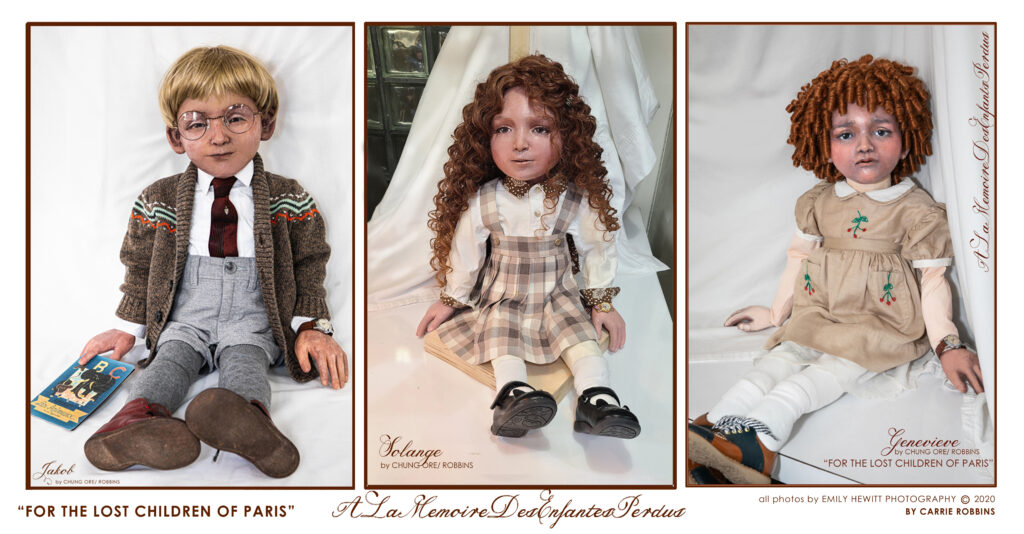
[SUMMARY]
THE
STORY AS IT OCCURRED IN HISTORY: In
Paris, 1942 – 1944, the Nazis, with the help of France’s Vichy government,
gathered up all the Jewish children they could find and took them to (primarily)
Auschwitz. In total, they collected
11,400 children. In 1945, at the
liberation, with the aid of excellent German record-keeping, 200 children were
found alive. This is the story of one
French classroom’s collection day and its aftermath.
The play is partly about deceiving children.
And of taking children away from their families. And of course, of murder, just because they
were Jewish. Or Romas. Or Jehovah’s Witnesses. Or Epileptics. Or Homosexuals.
Or ‘Retards’. Or ‘Disabled’, and so on. Cr
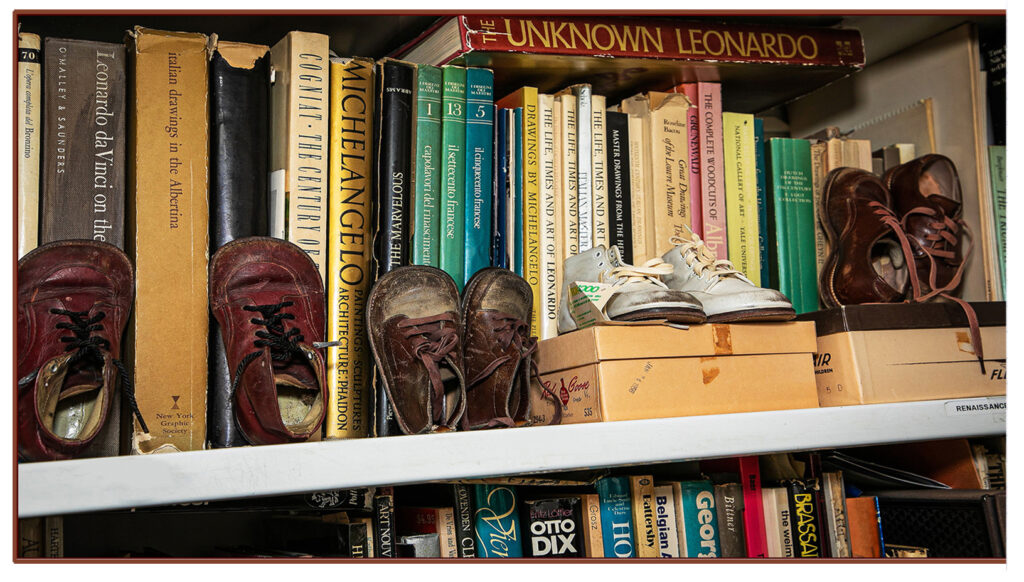
[PROLOGUE]
SETTING THE DOLLS’ KINDERGARTEN CLASSROOM:
It’s 1942. Gepetta, wearing the high-waisted pleated slacks of the time & a carpenter’s apron of waxed cotton is at work in her small studio.
Behind her, the model of a carved theatre proscenium sits on a worktable. Commedia-like puppets, in various states of ‘dishabiller’, are strewn round the table. Also some toys needing repair, & some modeling tools. Gepetta opens the doors of a steamer trunk, the old kind with drawers; each drawer contains a pair of large dolls. She fusses with each, tying shoes, fluffing hair. As she works, she describes a friend of hers, Elodie, a professional calligrapher, who, having scribed most of the choice parts of the Bible, and almost all Shakespeare’s sonnets, came to Paris looking for ‘something new to write’. Gepetta tells of Elodie’s obsession with the plaques she discovered by the front doors of all the schools in Paris. The plaques read: “A La Memoire des Enfants Deportes” (“To the Memory of the Deported Children”) at the top. A list of the children’s names and ages follows. Then, at the bottom: “Ne les oublions jamais.” (We must never forget them.) Gepetta sets some of the dolls in wooden school desk-chairs. There is some discussion between Gepetta & Jakob (a little Jewish boy) over his preference for American sneakers versus the leather tie-up oxfords more commonly worn, but a rapprochement between them is reached. She hands the 3 principal dolls off to their Wranglers. Mlle. Brigette, their teacher, enters the ‘classroom’. The children & their Wranglers fall into formation & freeze. There is a very bright pop of light. The class has had its picture taken.
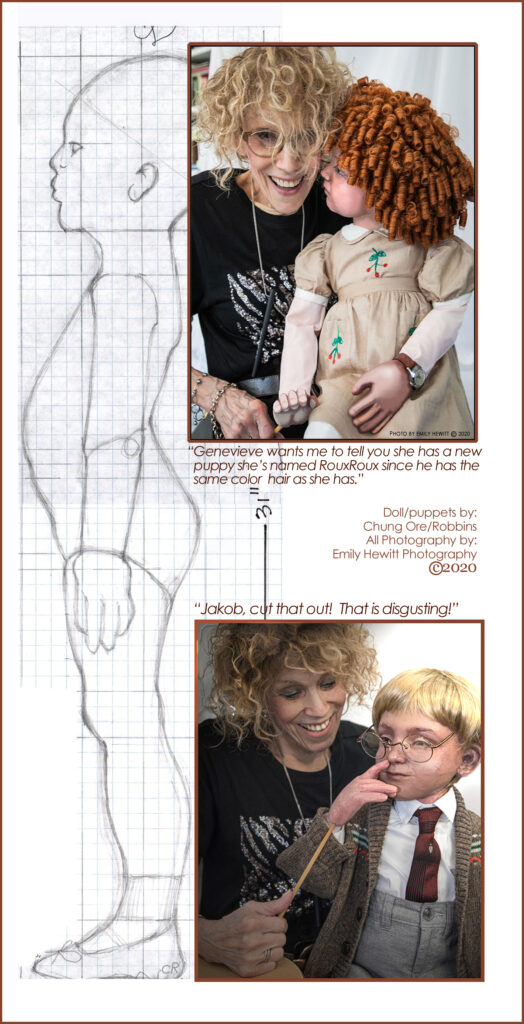
PART 1.
THE DOLLS COME ALIVE:
We meet the children: Solange, Jakob, Genevieve, & Sabine. We hear about a new puppy. The smartest among them conjugates ”etre”. The children discuss names for the new puppy. They learn from their teacher that some lucky ones amongst them will receive a great surprise from a visitor. Then, a knock at the door.
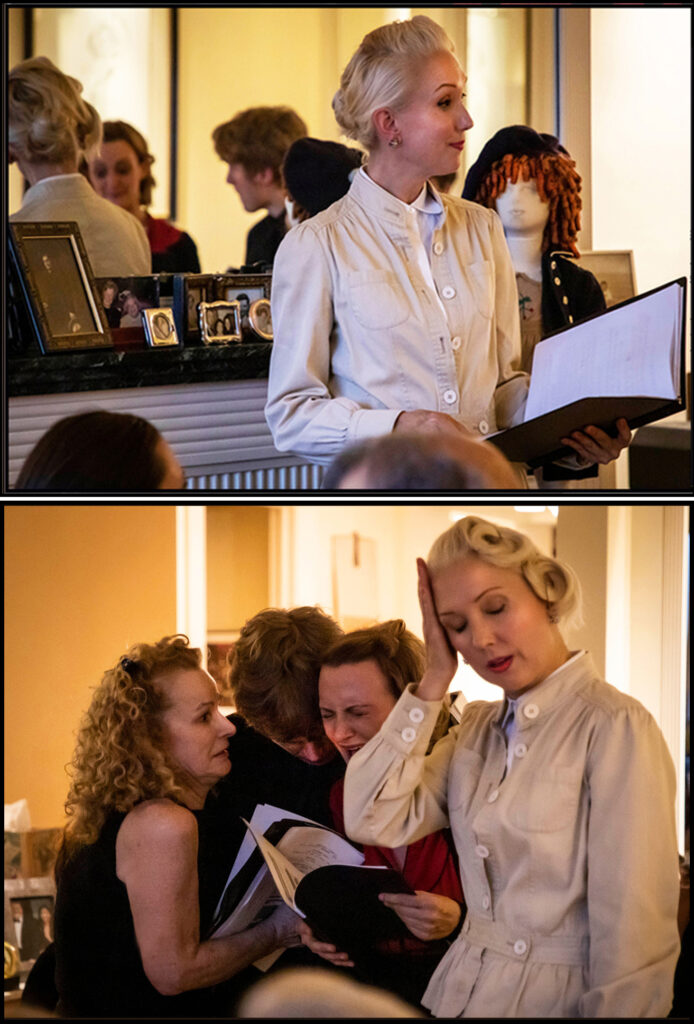
PART 2. A SPECIAL VISITOR COMES TO THE KINDERGARTEN CLASS:
A beautiful uniformed woman appears; she reveals that the very smart Jewish children will be rewarded with a wonderful train trip, for which their parents have already consented, and even packed their luggage! The Jewish kids are ‘faklempt’ with excitement, except for Genevieve, who would prefer to go home and play with her new puppy. She cries. The beautiful Lieutenant finds this behavior annoying to say the least.
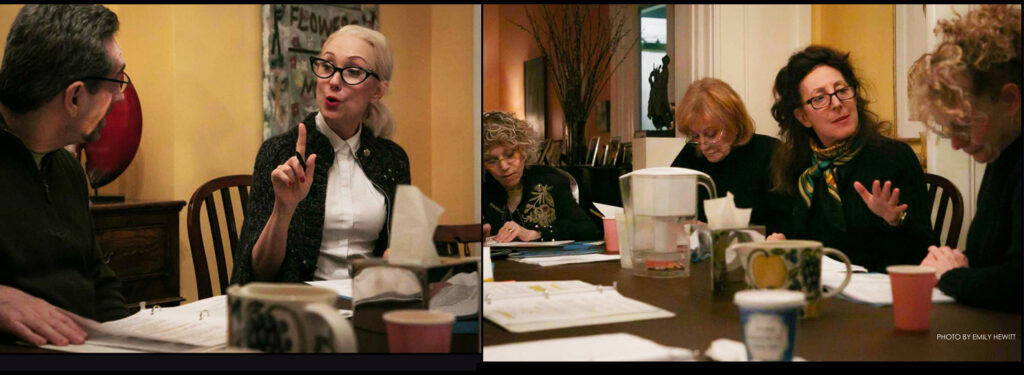
PART 3. THE
CHESS GAME & JOUST:
Mlle.
Brigette speaks privately to the Lieutenant; she makes the officer an unusual
proposal. It involves a lot more study for the Jewish kids, but a lot less “train”
travel. The Lieutenant is not receptive, but agrees to return later that
evening to pick up a formal proposal which the teacher will prepare.
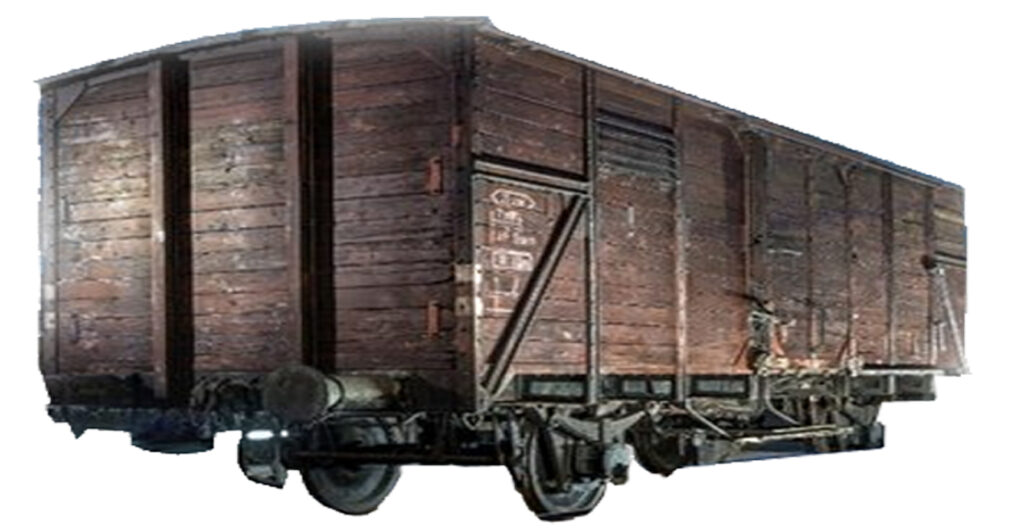
4. THE
JEWISH CHILDREN BEGIN THEIR TERRIBLE JOURNEY:
The 3 Jewish children are taken
by the Lieutenant to the waiting train in a red Berlin flyer. Their teacher
remains in the classroom waiting for the Lieutenant’s return to pick up the
precious academic proposal. The train’s
metal door screeches open, wide, like a gaping dark mouth. The train doesn’t
look right to the children. It has no interior lights. It has no windows. And
NO SEATS. [It is, instead, a standard
issue German Boxcar.] The children
object. Things go sharply downhill from there. With the ‘help’ of the
Lieutenant, the 3 children and their Wranglers disappear into the car. The
metal door grinds closed.
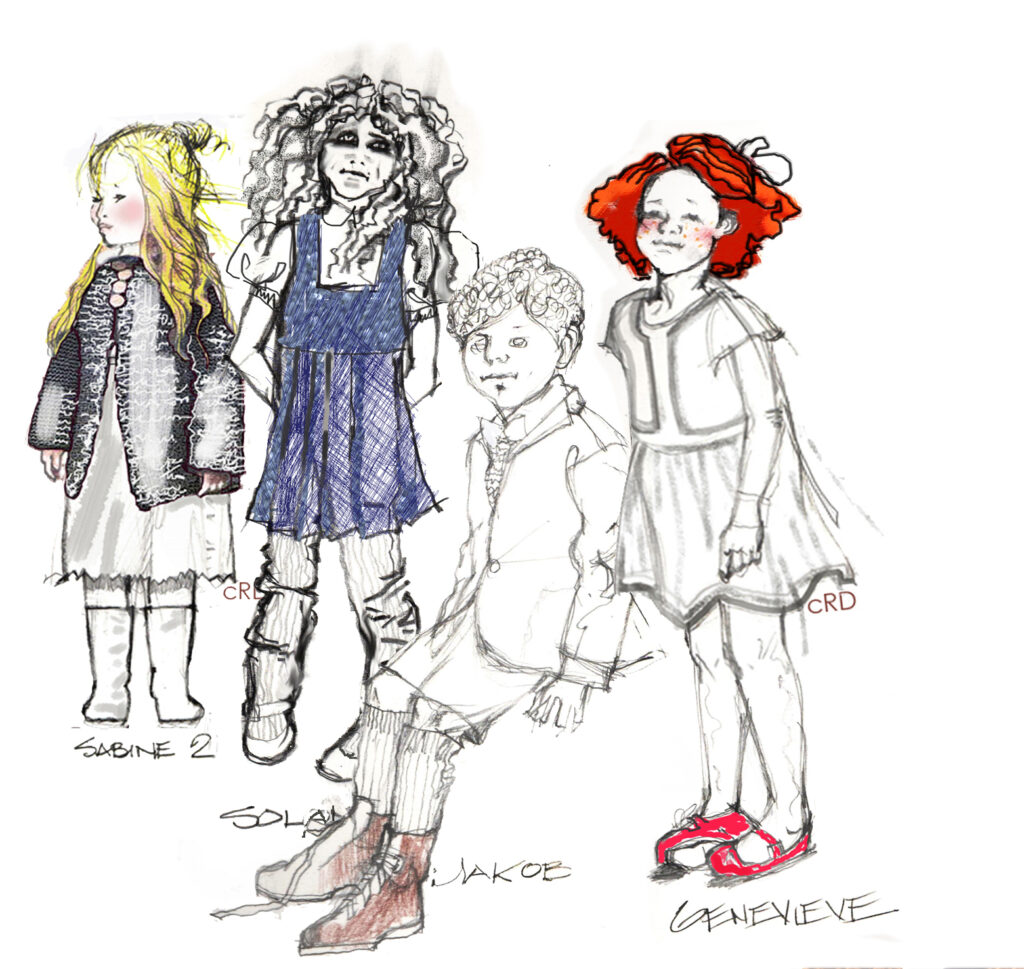
EPILOGUE:
THREE YEARS HAVE GONE BY. (1945. The war is
over.)
Image: Soft light begins to stream through the
slatted sides of the wooden boxcar. The
boxcar door, soundless this time, glides open.
We see a large pile of doll-children carpeting the floor of the car. Limp bodies crisscross each other. They wear the familiar stripes of prisoner
garb, oversized on these little bodies. They’re faded, threadbare, ripped, &
hard to see clearly in the low light. They’re stacked like a trifle seen through a
cloudy glass compote dish.
Like a dumb show: Mlle. Brigette puts on her coat & hat, both
now worn. She picks up a “bookbag’ which
likely holds a typed thesis, a syllabus, and some other formal papers never
picked up. She moves up the few stairs to the classroom door, then approaches
the open boxcar. There’s some movement
from within the pile of stripes. She
jumps back, assuming it’s some kind of animal foraging. The pile moves
again. A rumpled figure appears out of
the pile. The teacher stares. It wears a
brimmed cap. There’s something familiar about it. And it stares back at Mlle. Brigette. It’s Solange.
Mlle. Brigette takes the cap off Solange, much to the child’s dismay. Solange’s beautiful long hair has been shaved
off.
Halting, they begin to talk. Solange
reports that the people who prepared the food in her camp did NOT know how to
cook. “And they definitely did not know
how to season anything. They were
definitely NOT French” she concludes.
Mlle. Brigette offers her home to Solange, and, as she has been caring for the
little red puppy since the children “left”, requests Solange’s help in training
the pup.
Image: Light begins to grow golden in the boxcar;
the figures within take on the glow of the old Renaissance paintings of Joseph,
Mary, & the baby in the manger. Music on piano and saw return. Teacher,
Solange’s Wrangler, & Solange rise and walk together. They’re going
home. Maybe a few stars blink.
The warm French voices update the story:
50 years after the Liberation, the French government, beginning to feel badly
about its complicity, determines to erect plaques next to the doors of each
Parisian school. Then the voices read the text of more recent plaques installed
in Parks for those children taken from the parks because they were too young to
be in school yet. An apologia. An
offering. “Nous les oublions jamais. “ Over the voices, sounds of French
children in the park, playing and singing. Then the sound of a little red dog
barking. Lights fade to black. END OF PLAY



 All Actors & Stage Managers appear courtesy of Actors equity Association.
All Actors & Stage Managers appear courtesy of Actors equity Association. This production is a part of SubletSeries@HERE, HERE’s curated rental program, which provides artists with subsidized space and equipment, as well as technical support.
This production is a part of SubletSeries@HERE, HERE’s curated rental program, which provides artists with subsidized space and equipment, as well as technical support. The Director is a member of the STAGE DIRECTORS AND CHOREOGRAPHERS SOCIETY, a national theatrical labor union.
The Director is a member of the STAGE DIRECTORS AND CHOREOGRAPHERS SOCIETY, a national theatrical labor union. These plays have been chosen for fiscal sponsorship by FRACTURED ATLAS, a national non-profit artist service organization providing a range of support for the independent arts community.
These plays have been chosen for fiscal sponsorship by FRACTURED ATLAS, a national non-profit artist service organization providing a range of support for the independent arts community.

